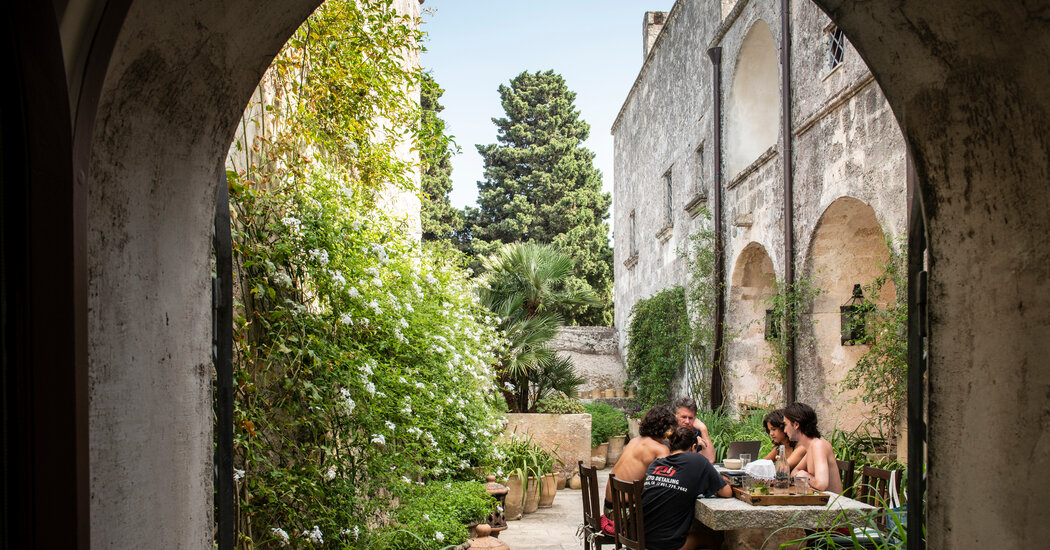“Go to one of the inland cities today,” advises the burly fruit seller as he hands me a barattiere, a mixture of melon and cucumber that’s indigenous to Puglia, the region that forms the stiletto heel of Italy’s boot. “The sand will be blowing today on both the coasts, and you won’t be able to see the lovely colors of the sea.”
The wind and the sea are constant topics of conversation in Puglia. Whether it’s the scirocco, the hot current coming from the Sahara, or the tramontana, the cold draft from the Alps (not to mention the ponente or the levante), the way the wind blows determines which beach to go to and how to plan the day. Bartenders, street vendors and shop owners are quick to opine about which is in force and how to best navigate its currents.
Tonight in Lecce, the tramontana takes center stage and the effect is like a fan blowing at medium speed on a still, hot evening. Doors of streetfront homes away from the more touristy main drag are slowly opening after long afternoon siestas, and nonne in house dresses hang laundry while they chat with neighbors and passers-by.
I join the evening stroll known as the passeggiata, mingling with both Italian and foreign visitors and stopping into a number of the city’s many churches (there are more than 40 in total) along the way. With its abundance of fine architecture and art, the city looks its best in these final hours before sunset, seemingly illuminated by a golden light from within. It is the limestone of the Salento, the southernmost area of this southernmost region, where the rock is soft and gentle for carvers, that provides the building blocks of the architecture here. Carparo, mazzaro, pietra Leccese, tufa — each stone offers a slightly different patina. Carvings make the facades come to cinematic life — cherubs, lions and griffins vie for the central role, as more stately religious types like angels and saints seem to try to tame their cavorting, to little effect.
After my church hopping, I find my way to Saloon Keeper 1933, a speakeasy-style bar with artisanal cocktails, bearded mixologists and mismatched furniture. Antique carpets lie under 1920s leather club chairs and framed vintage photographs hang from the walls. But what sets it apart from a similar spot in, say, New York or London, is that it sits smack in front of the Chiesa di San Niccolò Dei Greci, a compact and still intact example of the city’s Byzantine church architecture. Locating a new generation of…
Click Here to Read the Full Original Article at NYT > Travel…
